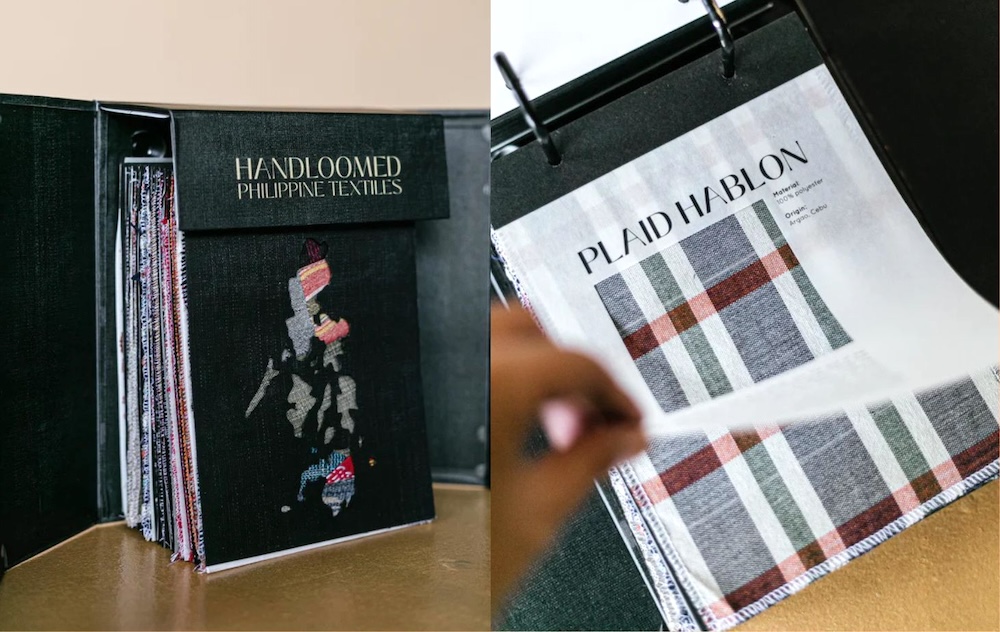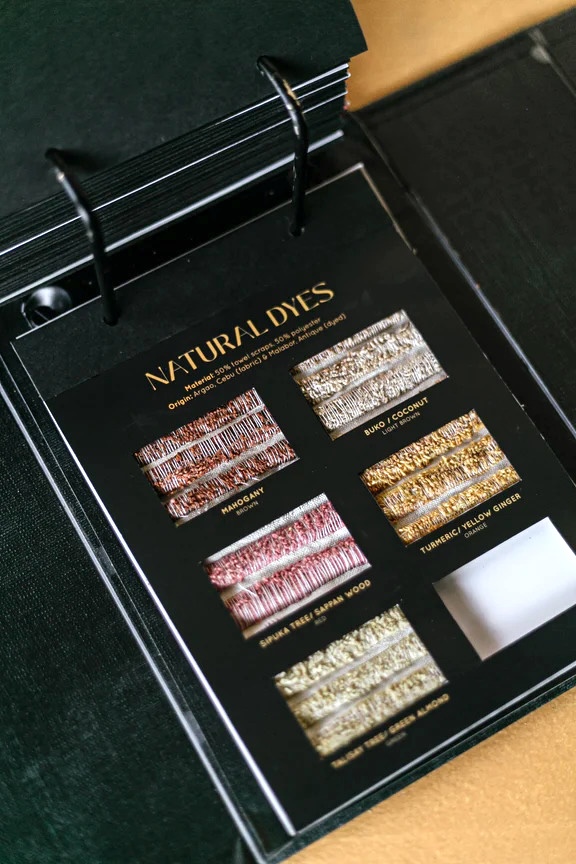LOOK: New book features swatches of 30 weaves and patterns from Luzon, Visayas, and Mindanao

The Philippine weaves book “PH Handloomed Textiles” by ANTHILL Fabric Gallery | Photo from ANTHILL Fabric Gallery
There are over 400 weaving groups all over the Philippines’ three major island groups, each with its distinct patterns, way of weaving, and materials of preference.
Given the vastness of our island geography, even a Filipino living at home may have difficulty tracking down these woven textiles. Making it even harder is the fact that these tactile cultural facts are in danger of becoming obsolete with an aging generation of weavers, its low perceived market value, and the lack of a proper archive to document them.
Lucky for Filipinos anywhere in the world, Cebu-based social and cultural enterprise Alternative Nest and Trading/Training Hub for Indigenous or Ingenious Little Livelihood seekers (ANTHILL) Fabric Gallery has just created a compact tactile reference for some of the country’s hand-loomed textiles.
View this post on Instagram
The “PH Handloomed Textiles” hardcover coffee table book retails for P17,000 and is currently available for pre-order on ANTHILL’s website. The book is also available for international shipping.
You may also like: Meet the Fil-Am-owned brand popularizing Indigenous weaves in New York
“This special curation of handwoven textiles showcases 30 beautiful weaves and patterns from Luzon, Visayas, and Mindanao featuring the origin, material used, and narrative behind every fabric,” reads ANTHILL’s website.

Also included is a section on our natural fibers and natural dye collection | Photo from ANTHILL Fabric Gallery
As these are actual swatches of handwoven textiles, browsing this Philippine weaves book also offers a tactile experience since one can easily flip through the pages of weaves and feel their texture.
Important to note, however, that the 30 weaves included here are just a chunk of the many handwoven textiles that can be found in the country.
“The curated fabrics of this book are based on the fabrics showcased by ANTHILL’s partner textile communities only.”
ANTHILL works with almost 700 artisans all over the country through its cultural, economic, and environmental programs geared towards production systems that are sustainable for the artisans themselves.
These efforts entail preserving assets and passing on weaving skills to the next generation by generating interest in the practice as a profitable source of livelihood for communities.
ANTHILL then turns these beautiful weaves into modern-day casual and formalwear like skirts, tops, as well as accessories, among other designs.
In 2021, in an effort to reduce waste from weave trimmings, they turned scrap woven textiles into a map of the Philippines detailing each pattern’s geographical origin.

